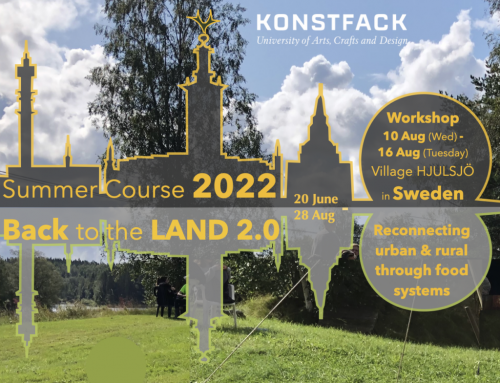Doors of Perception 9 takes place in New Delhi 28 February to 4 March 2007. The theme is “Juice: Food, Fuel, Designâ€.
We’ve extended the first deadline for submissions to 30 September.
Why “juice”?
(Most of the statistics that follow are taken from the miraculously useful and interesting website of Jean-Marc Jancovci)
Global food systems are becoming unsustainable in terms of environmental impact, health, and social quality. But what to do?
The U.S. food system consumes ten times more energy than it produces in food energy. This disparity is made possible by nonrenewable fossil fuel stocks.
127 calories of energy are used to grow and export one calorie of lettuce from the US to the UK.
In ‘developed’ countries, CO2 emissions attributed to producing, processing, packaging and distributing the food is about 8 tonnes a year for a family of four.
Agriculture and food now account for nearly 30 percent of goods transported on Europe’s roads.
95 percent of the fruit and half the vegetables eaten in the UK are imported.
There are 52 transport and process stages in one bottle of ketchup.
In France, 20 percent of money spent by citizens on food is devoted to raw products such as fruit, vegetables, or fresh meat of fish. The rest is used to buy processed food : pasta, canned food, frozen food, biscuits and sweets, drinks, etc.
These processing industries consume energy and therefore emit greenhouse gases.
Most processed foods are packaged. Manufacturing the packaging (steel, aluminium, plastics) accounts for 70- 80 percent of the overall emissions of the food industry.
Processed food is generally bought in supermarkets which consume electricity to keep foods frozen – especially in open display units.
Most supermarkets sell industrially-grown chickens. The lifecycle of such a bird entails:
• Emissions linked to the heating of the hen house;
• Fossil fuels used to manufacture the fertilizers used to grow the grain eaten by the chicken;
• Fossil fuels burnt by the tractor used to grow the grain eaten by the chicken;
• Nitrous oxide (N2O) emissions that occur when the fertilizers are spread on the field;
• Fossil fuels required to manufacture chicken food (industrial chickens rarely eat “raw” cereals, but rather processed foods) from the cereals;
• Emissions linked to the manufacturing of tractors, to the drying of grain, and to the refinery of the diesel oil used by the tractor….
Eating meat requires intensive agriculture because it is necessary to grow a lot of plants to feed the animals.
When decaying, nitrogenous fertilizers cause N2O emissions, 300 times more powerful than CO2.
Ruminants emit methane, which is 23 times more powerful than CO2, because of the fermentation of the plants they eat in their digestive sysem.
Producing an unprocessed kilogramme (2.2 pounds) of beef (with bones) leads to the emission of three to four kilogrammes (nearly nine pounds) of carbon equivalent.
Between 65 and 70 percent of the available agricultural land in France is devoted to feeding animals.
Fruits and vegetables (except for potatoes and vineyards) acount for two percent of the total.
The amount of meat consumed by an inhabitant of the Earth has increased by 60 percent over the last 40 years while the world population has doubled. Meat production has been multiplied by 3.2
Every cow in the European Union is subsidised by $2.50 a day.
One in five people in the world lives on less than $1 a day.
The US insists that 50 percent of its food aid is processed or bagged.
Poor diet and physical inactivity account for 35 percent (and rising) of avoidable causes of deaths in the US.
People in industrialised countries eat between six and seven kilogrammes (about 15 pounds) of food additives every year.
Supermarkets are heated in the winter and cooled in the summer. Heating and cooling stores represents, in France, between 1,5 and 2 million tonnes carbon equivalent carbon.
Supermarkets are usually located in suburbs – so we use cars to get there. In the UK, 25 percent of car journeys are to get food.
In the home, our use of processed foods causes us to use more energy in fridges and freezers, stoves ovens, microwaves.
In France, the electricity consumption linked to eating (fridges, freezers, dish-washers, stoves and ovens, not to mention small appliances) represents 22 percent of all energy consumed at home,
25 percent of domestic waste is composed of food waste which, when landfilled, leads to methane emissions.
Is that all mad, or what?
That is why Doors 9 is about food and energy.



